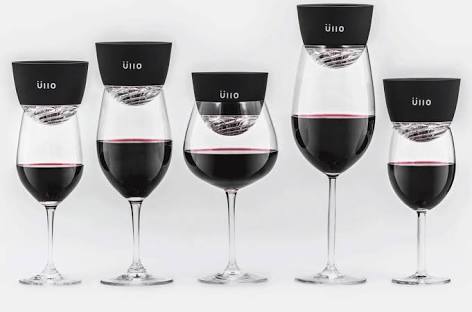Why Wine Contains Sulphites

Why are there sulphites in wine?
When drinking wine or cider, you may have noticed on the bottle label the words "contains sulphites". The idea of adding some to the wine dates back several centuries. But what is sulphites? And are they dangerous for your health?
It is thought that it was the Romans who first came up with the idea: they discovered that by burning sulfur candles in empty bottles, the wine put there was less likely to turn and take the taste and smell of vinegar. This process was effective because the combustion of sulfur produces gaseous sulfur dioxide. Later, the addition of sulfur dioxide to wine became common practice in the Middle Ages .
Sulfur dioxide as a preservative has several advantages: first, it is an antioxidant that slows down the rate of oxidation reactions . In wine, it prevents the oxidation of certain organic compounds, thus preserving the color and the perfume of the wine. It is also an antimicrobial, very important in wine and other drinks in which it is added because it prevents the growth of mold and toxic bacteria .
Used always, sulphites have an antiseptic role, control the development of micro-organisms and fix the oxygen present in the wine. They thus preserve it from oxidation, premature aging and some unpleasant odors generated by yeasts. Sulfur is used by all producers, even in organic vineyards.
When are they added?
Sulphites can be added to the vat as soon as the grapes are harvested, to counter oxidation. The barrels and all the equipment are also sanitized with sulfur wicks. Sulphites can also be used to stop fermentation because they stop the action of yeasts. In general, they are assimilated, transformed, degraded or evaporated during the process. Sulphites that are of greatest concern to consumers are those added at the time of bottling to protect the wine during transport and allow its preservation.
What is the danger of sulphites?
Sulphites do not cause a true allergic reaction, but the few people who are sensitive can experience similar reactions to those associated with food allergies and difficulty breathing in asthma. It should be noted that these people will have the same problem with a hundred current food products (cereals, cold cuts, dried fruits, seafood ...).
What is the amount of sulphites eligible?
This question is a big sticking point. The legislator merely warns allergic people, but many professionals would like to go further by mentioning the amount of sulphites and thus give a criterion of quality. Indeed, if it is exceptional to find a wine without sulphites, one can find differences in the amount of sulphites in the proportion of 1 to 8 between two wines. For information, levels of the order of 100 mg / liter are considered low: there is no more sulphites in a liter of wine of this type than in 50 grams of dried apricots.
The maximum limits imposed by the EEC standards are 160 mg of SO2 / liter of wine for red wines, and 210 mg of SO2 / liter of wine for rosé wines. At Domaine les Maurines, we take great care to limit our SO2 additions as much as possible to an average of between 70 and 80 mg / l of SO2 in our red wines, and between 90 and 110 mg / l in our rosé wines. It is certain, no risk of skull after drinking the wines Les Maurines!
Are there wines without sulphites?
No, because the fermentation itself produces sulphites. Regarding additions by producers, those who have tried the "sulfur-free" experiment have given up or are limiting themselves to marginal production. Without sulfur, the wine is very unstable, it must be closed by a stainless steel capsule, transported and stored as a fresh product. It travels badly and residual carbon dioxide can restart the fermentation at any time. As for the substitution methods, they are (in the present state of research) more penalizing for wine than sulfur.
Does it exist with little sulphites?
Certainly. We can cite the older wines where sulphites have combined and therefore attenuated, the red wines, where the antioxidant role of sulfur is held by the tannins, but there are other benchmarks. For example, a hand-picked grape is less damaged when it arrives at the tank and requires less sulfur at this level. But here you have to know how to work the winemaker!
So what to do?
Note, Sulfur has been used in winemaking for a long time and will certainly be so for a long time. The phrase "Contains sulphites" is about as commonplace as "Contains grapes".
if this legislation evolves towards a labeling of the quantities of sulphites, you will be able to locate the vine growers who abuse them. In the meantime, go for small producers, owners-harvesters, wines bottled at the estate, such as our red wines and our rosé wine, which are a priori less loaded with sulphites because less subject to alteration by transport .
To taste without ulterior motive, if the sulphites of the wine killed, there would be more people to worry about it!
Written by
tanks for contrubitions
Thank you for this great article. A holistic view on the topic of sulphites in whine! 100% Upvoted and resteemed. Hope for more excellent articles like that one.
Note, Sulfur has been used in winemaking for a long time and will certainly be so for a long time. @steemnaira @upvotelife
Thank you for a very interesting and informative post. I truly had no idea of the history nor the reasons why wine contains sulphites.
Great write up@phunke
didn't even know the contents of what i drink once in a while, lol. thanks for telling me this